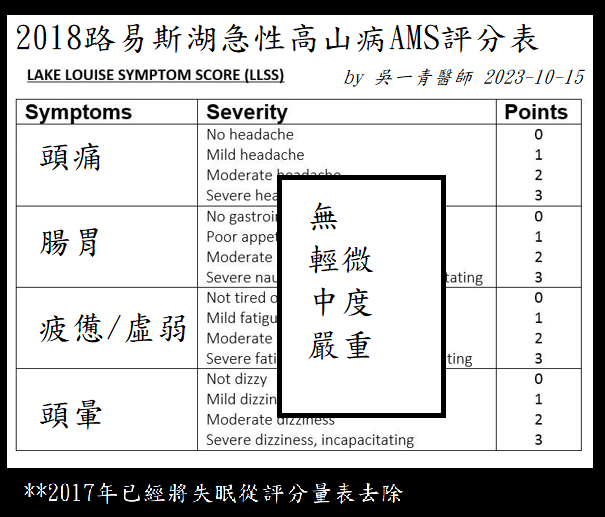2023-02-02 08:36AM
目前建議第一線用藥還是選 baktar. 而 cefa 可做為第二線用藥
如果局部地區的baktar抗藥性超過 20%, 就別選 baktar.
from uptodate
Trimethoprim-sulfamethoxazole – Dosed as one double-strength tablet (160/800 mg) orally twice daily for three days. Randomized trials suggest a 79 to 100 percent clinical cure rate with a three- to seven-day regimen [48,56-58]. Empiric trimethoprim-sulfamethoxazole should be avoided if the regional prevalence of resistance is known to exceed 20 percent [29,30]. In some regions, trimethoprim (100 mg twice daily for three days) is used in place of trimethoprim-sulfamethoxazole and is considered equivalent [59].
關於台灣的大腸桿菌對 baktar 抗藥性問題. 沒有搜尋到直接的研究. 在2018年台中榮總婦產科蔡青倍醫師的文章. 有提到抗藥性問題. cefa 和 baktar 都有抗藥性的憂慮 .
女性單純膀胱炎 (cystitis/UTI) 通常開
BAKTAR 400mg BID * 3 days or
CEFA 500mg Q6H * 3-7 days[參考資料]反反覆覆的婦女泌尿道感染 [更新日期 2018/10/8 11:30:44]
Trimethoprim-Sulfamethzazole(TMP-SMX)160/800mg. ㄧ天兩次服用三天廣效性。然而目前研究顯示對TMP-SMX有抗藥性的大腸桿菌越來越多(>17%),但由於此藥便宜,且濫用Fluoroquinolone會衍生出更多抗藥性的問題,故目前此藥還是泌尿道感染的首選藥物。
Cefalexin 250mg 一天四次服用7-10天.抗菌效果較廣泛,但其抗藥性也是與日俱增,且因其廣效性,所以可能破壞人體的正常菌叢,造成不必要的念珠菌感染,但其可以當成孕婦泌尿道感染的第二線用藥
2023-02-02 09:02AM
美國感染症學會的單純泌尿道感染指引(連結在此), 最近更新日期是 2011年3月. 已經11年沒有改版了.

JOURNAL ARTICLE GUIDELINES-International Clinical Practice Guidelines for the Treatment of Acute Uncomplicated Cystitis and Pyelonephritis in Women: A 2010 Update by the Infectious Diseases Society of America and the European Society for Microbiology and Infectious Diseases .
Clinical Infectious Diseases, Volume 52, Issue 5, 1 March 2011, Pages e103–e120, https://doi.org/10.1093/cid/ciq257
Published: 01 March 2011
上面這篇指引放在 Oxford Academic(牛津學術?不知道有沒有比較統一正式的翻譯). 這個平台收錄牛津大學出版社 (Oxford Univerity Press, OUP) 發行的圖書與電子期刊,
2023-01-02 19:12
另一篇相關文章建議看看. 無症狀之菌尿症評估處置. from uptodate
下面這段是很久很久以前的筆記. 放在另一篇文章.
2021-07-30 參考資料 uptodate acute simple cystitis in women
第一線藥物可選下列之一
BAKTAR 比較容易遇到抗藥性. (近期曾感染. 或反覆膀胱炎/尿路感染. 需考慮抗藥性問題)
pivmecillinam 效果較差三個月內若曾服用其中一種抗生素, 再次感染可選擇另一類(避免遇到抗藥性)
First-line antimicrobial options —
The preferred agents for empiric therapy of acute simple cystitis are nitrofurantoin monohydrate/macrocrystals, trimethoprim-sulfamethoxazole, fosfomycin, and, if available, pivmecillinam because of the favorable balance between efficacy and adverse effects (including the risk of selecting for resistant organisms) [1]. None of the first-line agents clearly outweighs the others in terms of the efficacy/adverse effects balance, with the exception that resistance is more likely with trimethoprim-sulfamethoxazole and that pivmecillinam (and possibly fosfomycin) is somewhat less effective; the optimal antimicrobial in one region may be different from that in another depending on resistance prevalence (see 'Resistance trends in E. coli' above). Thus, the choice among them should be individualized based on patient circumstances (allergy, tolerability, expected adherence), local community resistance prevalence, availability, cost, and patient and provider threshold for failure. If the patient has taken one of the agents in the preceding three months, a different one should be selected.
2011-07-18
2010 update. Acute Uncomplicated Cystitis and Pyelonephritis in Women: A 2010 Update by the Infectious Diseases Society of America and the European Society for Microbiology and Infectious Diseases
不建議用FQ作為一線用藥.
FQ可用於單純的APN. 或者複雜性CYSTITIS.
https://jamanetwork.com/journals/jama/fullarticle/1832532


Empiric antimicrobial selection for women with acute uncomplicated cystitis
uncomplicated UTI in women.
如果沒有抗藥性細菌的危險, 不需要做尿液細菌培養, 抗藥性細菌風險包括過去三個月內
1. 尿曾分離出抗藥菌
2. 住養護中心/住院病患/住長照中心 (但肺炎抗藥性細菌與此無關, 與宿主本身因素有關)
3. 曾使用廣效抗生素(FQ/TMP-SMX/ 3rd cefa)
4. 曾在高抗藥細菌盛行區旅行(印度,以色列,西班牙,墨西哥)

如果以上幾種一線藥物都不適合給(沒進貨?). 可以考慮下面處方

如果不適合給 BETA-LACTAM 可以考慮給 FQ.

UTI一般給CEFA 500mg Q6H OR BAKTAR 400mg BID
慢性腎病/腎衰竭病患 CKD病患 UTI 可以給ZINNAT(CEFUROXIME) 250mg BID OR CIPROXIN 250mg BID
UPTODATE 裡面提到: 如果抗藥性細菌的機率不高, 可給一線口服抗生素. (nitrofurantoin monohydrate/macrocrystals, trimethoprim-sulfamethoxazole, fosfomycin, or pivmecillinam
Low risk for resistance — For patients who do not have risk factors for an MDR infection (table 1), we typically choose one of the first-line antimicrobial regimens (nitrofurantoin monohydrate/macrocrystals, trimethoprim-sulfamethoxazole, fosfomycin, or pivmecillinam) (algorithm 1). (See 'First-line antimicrobial options' below.)
For patients who have reasons to avoid all these options (either because of allergies or intolerances or a history of a urinary isolate resistant to these agents within the prior three months), we choose an alternative option. (See 'Alternative antimicrobial options' below.)
First-line antimicrobial options — The preferred agents for empiric therapy of acute uncomplicated cystitis are nitrofurantoin monohydrate/macrocrystals, trimethoprim-sulfamethoxazole, fosfomycin, and, if available, pivmecillinam because of the favorable balance between efficacy and adverse effects (including the risk of selecting for resistant organisms) [1]. None of the first-line agents clearly outweighs the others in terms of the efficacy/adverse effects balance; the optimal antimicrobial in one region may be different from that in another depending on resistance prevalence (see 'Resistance trends in E. coli' above). Thus, the choice among them should be individualized based on patient circumstances (allergy, tolerability, expected adherence), local community resistance prevalence, availability, cost, and patient and provider threshold for failure. If the patient has taken one of the agents in the preceding three months, a different one should be selected.
If all these are appropriate options based on patient circumstances and prior urinary isolates, we suggest nitrofurantoin or trimethoprim-sulfamethoxazole rather than fosfomycin or pivmecillinam. Fosfomycin retains activity against many MDR isolates, but overuse may result in increasing rates of resistance; thus, we reserve its use for suspected MDR infections when there are no other oral options. Pivmecillinam is somewhat less effective but is commonly used in Europe because of a low risk of selection for resistance.










